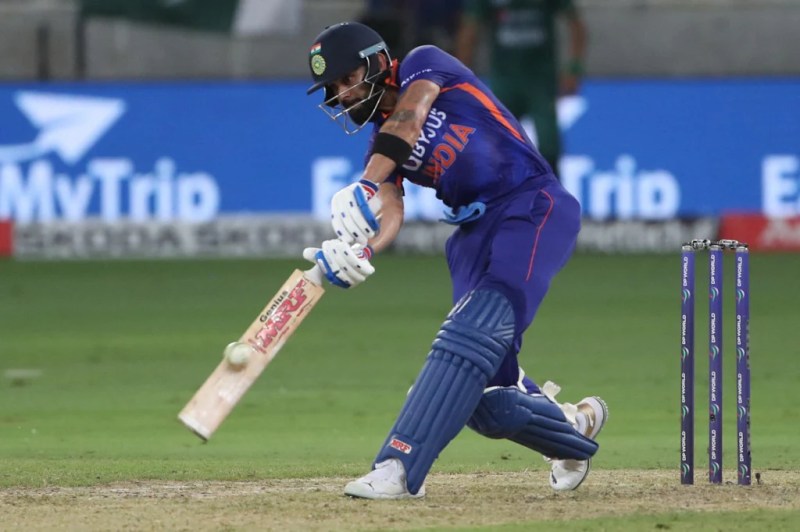
Are you persuaded by the evolving restrictions that exactly an ODI match faces? Cricket at no cost is the most thunderous and celebrated sport that is respected all over the world. Having over 150 years of existence, the game has evolved, getting hearts beating faster every day. It is now among the most popular, generating huge revenue while using the latest technological advancements ICG is the ‘rule keeper’ of the cricket world. Do you want to discover the unstoppable Powerplays in ODI Cricket with SportsX9?
What Powerplay in ODI Cricket is all about?
Fielding restrictions in Powerplay in ODI Cricket, The 1st and 10th overs, are imposed to help the batting team take loose singles and boundaries. It provides batsmen freedom to play fearlessly, making open EU conditions. The rule was first adopted by the ICC in 2005 to make one-day matches more scoring and thrilling.
How Does Powerplay in ODI Cricket Work?
An ODI innings is divided into three powerplay phases:
- Powerplay 1: Overs 1-10 – Only 2 fielders allowed outside the 30-yard circle
- Powerplay 2: Overs 11-40 – Only 4 fielders allowed outside the 30-yard circle
- Powerplay 3: Overs 41-50 – Only 5 fielders allowed outside the 30-yard circle
As the innings progresses, more fielders are allowed in the outfield, making it tougher for the batsmen to score boundaries. Teams aim to capitalise fully during the initial powerplay overs.
Read: Vitality T20 Blast Match Prediction & Betting Tips
Powerplay Rules in ODI Cricket
The official Powerplay Rules in ODIs, as per the ICC, are:
- There is a maximum of 2 fielders allowed in the 30-yard boundary outside the circle till the 10th over is bowled.
- In between over 11-40, the total fielders outside the 30-yard circle should not be more than 4.
- Over the last ten overs, the fielding side can only have up to 5 players outside the 30-yard circle.
It has to be mentioned that the number of powerplay overs could be reduced in case of a forced break.
SportsX9 and Powerplay Connection
And SportsX9 is the one to watch, now! As a platform that completely focuses on providing insightful analysis and data with a unique perspective into the world of sports, we provide a separate viewpoint on how teams plan their strategies and execute their game plans in the powerplay moments. By availing of expert commentaries, statistical breakdowns, and in-depth interviews, SportsX9 estimates the fringe of the excitement and unravels the finesse that makes powerplays a crucial component of ODI cricket.
A Glimpse into Cricket’s Spectacular Moments
Now, let’s explore some noteworthy records associated with ODI Powerplays:
| Team | Opposition | Date | Runs in Powerplay |
| New Zealand | Sri Lanka | 28 Dec 2015 | 118 |
| New Zealand | England | 20 Feb 2015 | 116 |
| West Indies | India | 14 Aug 2019 | 114 |
| South Africa | Sri Lanka | 8 Aug 2018 | 113 |
| Australia | Sri Lanka | 31 Aug 2016 | 109 |
Team New Zealand dominates the list, scoring 118 runs against Sri Lanka on 28 December 2015. This table showcases the top 5 runs scored in the first Powerplay by a team, providing cricket enthusiasts with insights into spectacular moments on the field.
Read: TNPL Today Match Prediction & Betting Tips
Top 10 Teams With The Highest Runs in First Powerplay
| Team | Opposition | Venue | Score | Year |
| New Zealand | Australia | Auckland | 81/4 | 2015 |
| Sri Lanka | Kenya | Colombo (RPS) | 81/1 | 2011 |
| Australia | Pakistan | Bangalore | 82/0 | 2023 |
| India | Netherlands | Delhi | 82/3 | 2011 |
| Sri Lanka | Australia | The Oval | 87/0 | 2019 |
| India | South Africa | Nagpur | 87/0 | 2011 |
| India | Afghanistan | Delhi | 94/0 | 2023 |
| Sri Lanka | South Africa | Delhi | 94/2 | 2023 |
| New Zealand | England | Wellington | 116/2 | 2015 |
| Australia | New Zealand | Dharamsala | 118/0 | 2023 |
Team Australia secures the top spot, scoring 118 runs without any loss of a wicket in the first Powerplay during the 2023 World Cup. This list offers a glimpse into the teams that excel in scoring swiftly during Power Plays.
What are the previous field Powerplay Rules Restrictions?
Before the implementation of the present Powerplay in the ODI Cricket framework, the field restrictions formed the rules differently. The years passed and the rules changed to improve the strike bowl and innings-run balance and make the limited-overs game more intriguing. Here’s a brief overview of the previous field restriction rules in cricket as per SportsX9:Here’s a brief overview of the previous field restriction rules in cricket as per SportsX9:
Initial Overs Restriction (Pre-2005):
- The older formats of limited-overs cricket had only fielding restrictions in the first overs of play.
- Normally the first six overs restricted to two fielders outside the 30-yard circle was the rule.
- This restriction was specially designed to promote pacey batting during the powerplay innings.
Later Overs Restriction (Mid-1990s to 2005):
- In the mid-1990s, the field Powerplay Rules restriction evolved to include two phases: the Powerplay and the next 35 overs.
- For the first 15 overs, there was a restriction for other fields to be placed inside the 30-yard circle only.
- A total of 4 to 7 fieldsmen were allowed to stand outside the sixty yards from the bowling crease.
Super Sub Rule (2005-2006):
- In 2005, ICC came up with the Super Sub-rule when a player could substitute a mate after the toss but before the commencement of play.
- There were hardly any fielding changes, and the fielding restrictions were still the same, where the first 15 overs had 2 fielders allowed outside the 30-yard circle.
Introduction of Powerplays (2005):
- The major change was introduced as powerplay in 2005 during One Day International cricket.
- The Powerplay divided the innings into three segments: Battles 1 (Overs 1-10), Battles 2 (Overs 11-40), and Battles 3 (Overs 41-50).
- The number of the thirty-yard circle where the fielders allowed outside varied during each Powerplay phase, giving strategy to tactical movements a dimension.
The evolution of field restriction rules in cricket reflects the sport’s ongoing efforts to balance bat and ball while maintaining the excitement and competitiveness of limited-overs cricket. The current Powerplay in ODI Cricket system, with its dynamic nature, has become a defining feature of One Day Internationals.
Players With Highest Runs in Powerplay in ODI
| Match | Batter | Runs | Date |
| ENG v NZ | Alex Hales | 66 | 17 Jun 2015 |
| SL v PAK | Kusal Perera | 68 | 15 July 2015 |
| NZ v ENG | Brendon McCullum | 77 | 20 Feb 2015 |
| WI v ENG | Chris Gayle | 77 | 2 March 2019 |
| NZ v SL | Martin Guptill | 93 | 28 Dec 2015 |
Martin Guptill leads the pack, scoring a remarkable 93 runs against Sri Lanka on 28 December 2015. Other players in the top five include Chris Gayle, Brendon McCullum, Kusal Perera, and Alex Hales, showcasing their explosive performances during Powerplay in ODI Cricket.
Players With the Most Runs in Powerplay in ODI Cricket
| Performer | Innings | Runs |
| RG Sharma | 176 | 3173 |
| S Dhawan | 163 | 3023 |
| MJ Guptill | 155 | 2830 |
| Q De Kock | 149 | 3006 |
| Tamim Iqbal | 146 | 2461 |
| DA Warner | 143 | 2935 |
| HM Amla | 140 | 2539 |
| AJ Finch | 137 | 2287 |
| TM Dilshan | 128 | 2356 |
| V Kohli | 160 | 1677 |
| JJ Roy | 109 | 2251 |
| JM Bairstow | 77 | 1565 |
| MDKJ Perera | 91 | 1433 |
| Fakhar Zaman | 77 | 1413 |
| WU Tharanga | 92 | 1413 |
Rohit Sharma claims the pinnacle spot, amassing 3173 runs in 176 innings for the duration of Powerplay in ODI Cricket. The list consists of cricketing giants like Shikhar Dhawan, Quinton de Kock, David Warner, and others, reflecting the dominance of these players within the early overs of ODIs.
Conclusion
As cricket fanatics, embracing the dynamic nature of Powerplay in ODI Cricket turns into an indispensable part of our appreciation for the game. With SportsX9’s commitment to delivering exceptional insurance, enthusiasts can revel in a more profound know-how of ways these strategic actions spread in actual time, adding a layer of pleasure to the sport we adore. So, the following time you watch an ODI, keep a watch on the one’s powerplay levels and let SportsX9 be your guide to unraveling the drama and strategy unfolding within the 30-backyard circle.



No Comments